
- Home
- Age
- Brand
- Antique (24)
- Birmingham (45)
- Campagnolo (28)
- Cartier (25)
- Christofle (28)
- Duchin (28)
- Estate (40)
- Fisher (25)
- Gorham (153)
- Handmade (35)
- International Silver (47)
- Native American (19)
- Reed & Barton (28)
- Sheffield (23)
- Sterling (33)
- Taxco (19)
- Tiffany & Co. (56)
- Towle (35)
- Unknown (47)
- Wallace (22)
- Other (3463)
- Composition
- Features
- 12-hour Dial (7)
- 3d Effect (8)
- Active Amplification (5)
- Adjustable (3)
- Carvings (5)
- Crystals (4)
- Easy Installation (6)
- Horn Tweeter (3)
- Lamp Shade Included (9)
- Nickel-free (10)
- Pair (113)
- Reclaimed (10)
- Restored (4)
- Reusable (3)
- Rewired (4)
- Side View (3)
- Signed (3)
- Single Wall Tip (3)
- Stackable (6)
- Vintage (5)
- Other (4009)
- Material
- Aluminium (24)
- Aluminum (79)
- Brass (29)
- Chrome (78)
- Crystal (17)
- Enamel (32)
- Gemstone (13)
- Glass (62)
- Metal (135)
- Mixed Materials (14)
- Pewter (10)
- Rhinestone (10)
- Silver (143)
- Silver Plate (33)
- Silver Plated (27)
- Solid Silver (129)
- Stainless Steel (18)
- Steel (16)
- Sterling Silver (74)
- Stone (37)
- Other (3243)
- Style
- Antique (51)
- Art Deco (263)
- Art Nouveau (57)
- Bangle (39)
- Cuff (47)
- Dangle / Drop (81)
- Elizabeth Ii (32)
- French (20)
- Georgian (33)
- Hollywood Regency (17)
- Hoop (18)
- Mid-century Modern (213)
- Modern (25)
- Neoclassical (26)
- Pendant (16)
- Stud (37)
- Traditional (20)
- Victorian (112)
- Vintage (39)
- Vintage / Retro (24)
- Other (3053)
Antique Victorian Pair of Owls Mother Of Pearl Sterling Silver Brooch Pin
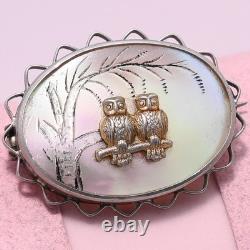
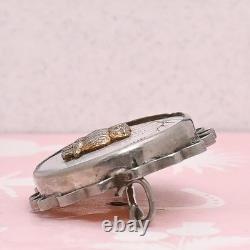
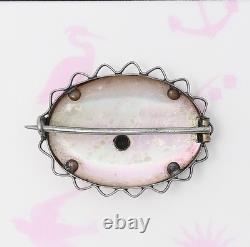
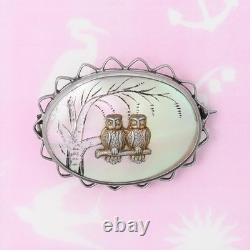
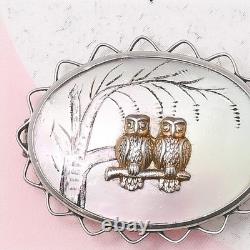
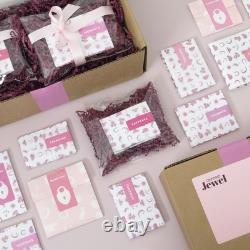


Tests for sterling silver, mother of pearl. A sweet scene with a wise twist.
This Victorian brooch captures the charm of figural jewelry with a delicately carved tree motif in glowing mother of pearl, its trunk and branches hand-carved in slight relief and painted. Perched above, a pair of owls-rendered in raised silver with a golden vermeil wash-lend their enduring symbolism of wisdom, watchfulness, and deep connection.
A subtle yet meaningful piece made all the more remarkable for its petite size. Bright patina with minor surface wear to the setting. Soft wear to the vermeil finish. Fresh sheen, light surface wear, and no chipping or cracking on the mother of pearl. Figural jewelry includes any piece that has been shaped into an animal, person, object, or detailed "day in the life" scene. Antique and vintage figural jewelry is often quite charming and collectible for the realistic or cutesy details.Specific objects or animals became popular and prolific in jewelry during certain time periods, Scotty dogs during the 1940s for example, or swallow birds during the Victorian era. Figural jewelry is special for its detail and realism but also tells the story of the decade they were made in. A young Queen Victoria assumed her role in 1837 and her taste in jewelry quickly became culturally influential, within England and beyond. Her relationship to jewelry was enmeshed with her husband, Prince Albert, who gifted the Queen for their engagement, a snake ring, embedded with an emerald (her birthstone) in its head.
Continuing from the Georgian era and intensified by Queen Victoria's taste, sentimental and figural jewelry was a major trend throughout the Victorian era. When certain ideas and words were deemed too forward or improper to be spoken, jewelry and symbolic meaning was used to communicate what was left unsaid. _gsrx_vers_1714 GS 9.9.2b4 (1714).

